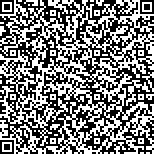本文已被:浏览 673次 下载 314次
投稿时间:2021-09-13 网络发布日期:2022-03-20
投稿时间:2021-09-13 网络发布日期:2022-03-20
中文摘要: 目的 探讨卓越教学法配合微信平台在呼吸科护生临床带教中的应用及对护生综合能力的影响。方法 选取2018年3月至2020年11月在北京积水潭医院呼吸科实习护生82例,随机分为对照组和观察组,各41例,对照组采用传统教学模式,观察组采用卓越教学法配合微信平台教学模式。比较两组护生带教学习后理论成绩、操作成绩、综合能力成绩、批判性思维能力评分和满意度评分以及出勤率。 结果 带教结束后,观察组的理论成绩、操作成绩、综合能力成绩、批判性思维能力倾向测试量表评分和满意度量表评分以及出勤率高于对照组(P<0.01, P<0.05)。 结论 卓越教学法配合微信平台模式可以提高呼吸科护生的综合能力和批判性思维能力,提高临床带教的教学满意度以及出勤率。
Abstract:Objective To investigate the application of excellent teaching method combined with WeChat in clinical teaching of nursing students in Respiratory Department and its impact on their comprehensive ability. Methods A total of 82 nursing students who practiced in the Respiratory Department of Beijing Jishuitan Hospital from March 2018 to November 2020 were selected and divided into control group and observation group randomly (n=41, each). The traditional teaching mode was adopted in control group, and the excellent teaching method combined with the WeChat was adopted in observation group. The scores of theories, operation, comprehensive ability, critical thinking ability, satisfaction and attendance were compared between the two groups. Results After teaching practice, the scores of theories, operation, comprehensive ability, critical thinking aptitude test scale, satisfaction scale and attendance rate of the observation group were higher than those of the control group (P<0.01, P<0.05). Conclusion Excellent teaching method combined with WeChat could improve the comprehensive ability, critical thinking ability, teaching satisfaction and attendance rate of clinical teaching of nursing students in Respiratory Department.
文章编号: 中图分类号:R47,G642 文献标志码:B
基金项目:国家卫生健康委能力建设和继续教育中心课题(2015-A-02-07);教育部哲学社会科学研究中大课题攻关项目子项目(13JZD047)
附件
| Author Name | Affiliation |
| PAN Feng*, SONG Ze-liang, SHEN Jie | *Education Section, Beijing Jishuitan Hospital, Beijing 100035, China |
引用文本:
潘锋,宋泽亮,沈杰.卓越教学法配合微信平台在呼吸科护生临床带教中的应用及对护生综合能力的影响[J].中国临床研究,2022,35(3):386-389.
潘锋,宋泽亮,沈杰.卓越教学法配合微信平台在呼吸科护生临床带教中的应用及对护生综合能力的影响[J].中国临床研究,2022,35(3):386-389.
